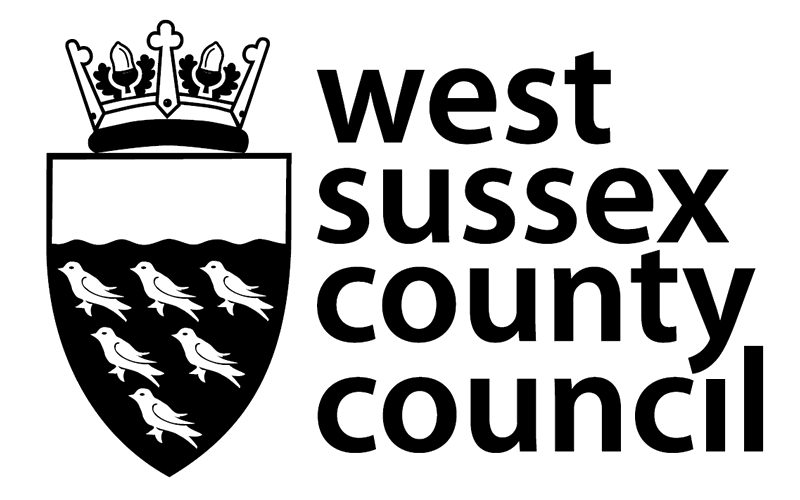1 Overview
Any new footways and footpaths we put in place will be designed and built with accessibility in mind, making sure services and products are usable by as many individuals (including those with disabilities) as possible. Most pedestrian facilities within West Sussex were built a long time ago, before it became a priority to make them accessible.
How dropped crossings and footway accessibility improvements are identified
There are too many locations to upgrade to modern accessibility standards all at once, so priority locations are identified through one of two routes:
Requests from communities. Anyone can nominate a location, with everyone from individuals and community groups to County Councillors and MPs often making nominations.
As part of routine maintenance activities. When carrying out large-scale footway or road repairs, we will consider the existing layout and make changes accordingly as part of the maintenance works if the existing layout does not meet modern standards.
Definition of a pedestrian dropped crossing
A pedestrian dropped crossing, sometimes called a dropped kerb, is an 'uncontrolled' point at which pedestrians can cross a road. These crossing points generally comprise of an area where the footway is ramped down to the road surface (the kerbs are lowered or dropped) and yellow tactile paving (bumpy paving slabs) is installed to aid visually impaired pedestrians in locating the crossing.
This is opposed to more formal 'controlled' crossing point, such as zebra crossings, pelican, toucan and puffin crossings and the like. These crossings also feature the ramped footway, but the tactile paving is red and signs, road markings and traffic lights will also be present to highlight the crossing to vehicles and indicate to pedestrians when it is appropriate to cross.
The less formal nature of pedestrian dropped crossings means they are usually used in less busy and quieter locations, such as residential and minor roads, whereas controlled crossings are more suited to busier and faster locations.
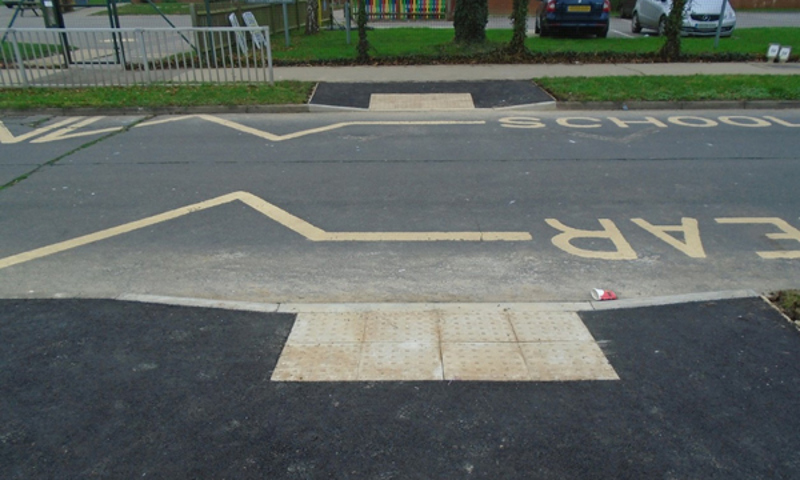
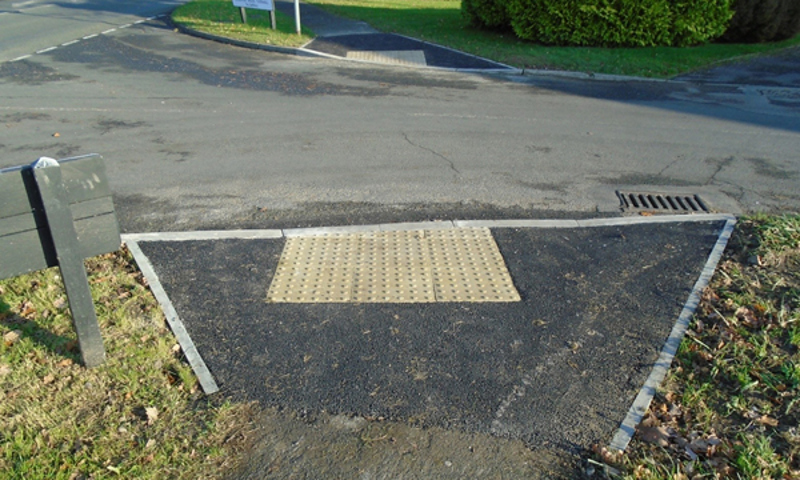
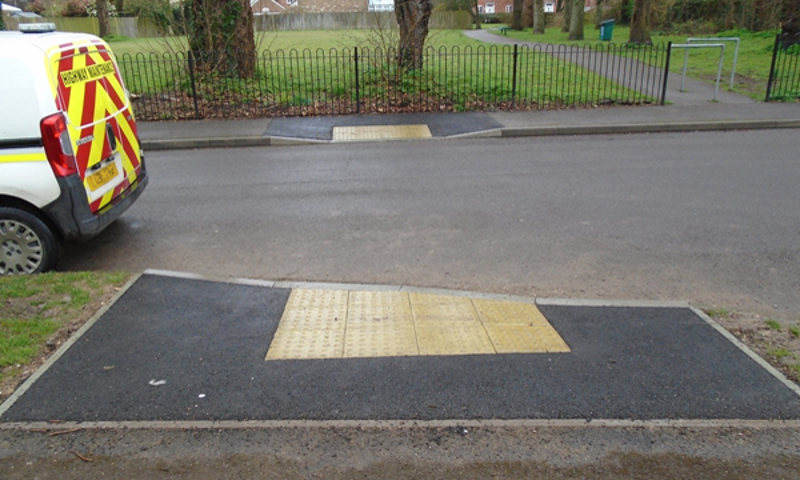
Definition of a footway accessibility improvement
Footway accessibility improvement is a catch-all term used to describe any small-scale or localised adjustment to a footway layout, other than a pedestrian dropped crossing, which will aid pedestrians in navigating their way around the footway. Some examples include:
- converting steps to ramps to improve access for wheelchair users
- widening narrow footways to allow mobility aid users to safely use the facility
- installing a new path to connect two separate paths together to avoid the need to walk on a verge or in the road
- adding a central refuge island to crossing points at wide junctions.
What is not considered an accessibility improvement
Larger-scale improvements to footways and related features are not suitable to be progressed as a pedestrian dropped crossing or accessibility improvement request, due to the more in-depth design and consultation and value process that needs to take place. Such requests should be made as a Community Highway Scheme.
Maintenance works, such as repairing potholes in roads and footways, replacing damaged kerbs and the like are also not considered to be improvement works. For such issues, please visit Make an enquiry about a road or pavement to find out more about making a request to improve pedestrian accessibility improvements.
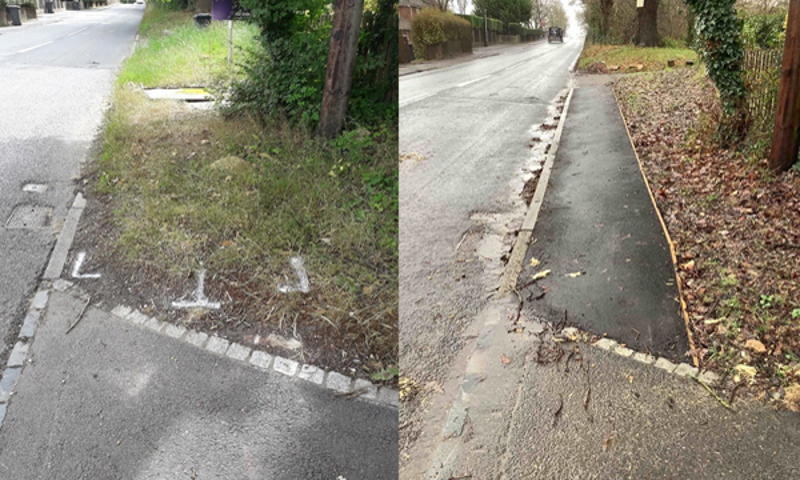
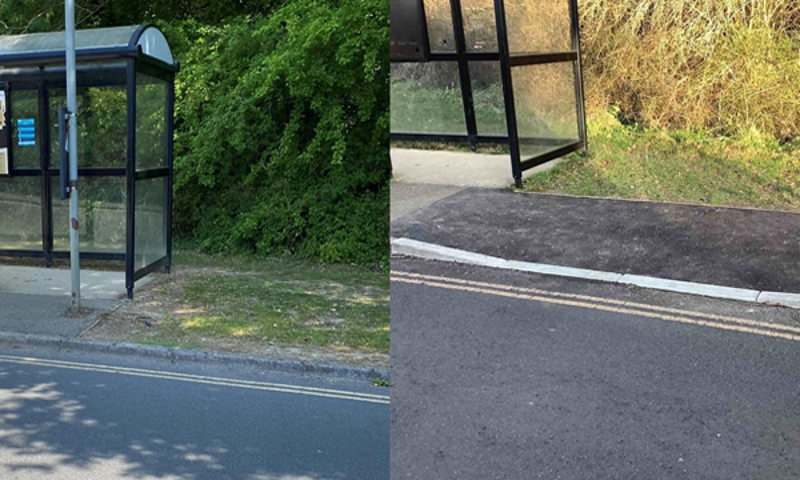
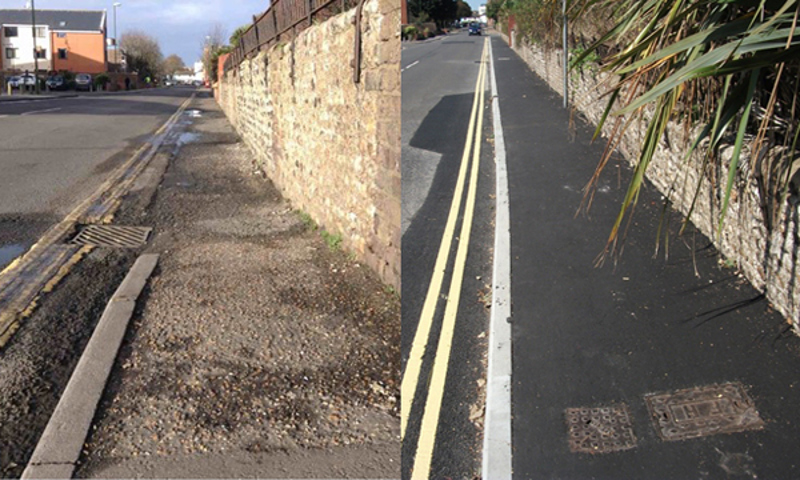
2 Making a pedestrian dropped crossing or accessibility improvement request
Please lodge your request using the general enquiry form below. Please provide as much detail as you can to aid us in assessing and prioritising your request quickly. You may provide more details, for example, where you are trying to get from and to, in addition to the specific issue you are experiencing.
Lodge your request as an enquiryPlease note the 'apply for a dropped kerb' section is related to vehicle crossovers (driveways) and is not related to dropped crossings for pedestrian usage.
3 Frequently Asked Questions
Can any location be upgraded to meet modern accessibility standards?
Whilst improvements to aid accessibility can often be made, and we will make every effort to ensure improvements adhere to modern standards, it is not always possible. Footways built a long time ago, were not designed to incorporate modern standard features. There is often insufficient space available to accommodate modern accessibility features. In situations like this, we may still be able to make improvements to aid accessibility, but they may not fully meet modern standards.
Safety is the main consideration in all situations and we will not make any changes that negatively impact on the safety of pedestrians or other road users, regardless of whether those changes do or do not meet modern accessibility standards.
What are the accessibility standards for improvements?
All pedestrian dropped crossings and accessibility improvements are designed to meet or exceed to modern standards, which are set out in various nationally recognised guidance documents, primarily:
Will I have to pay anything if I make a request?
No. Whilst an accessibility improvement request may originate from an individual, such improvements are intended to aid all pedestrians using the footway and these improvement works are funded by the County Council rather than the individual.
This is opposed to a vehicle crossover (driveway) which are intended to benefit a specific individual or household and do not serve a wider public usage. Consequently, funding for such requests is provided by the individual or householder.
However, the County Council’s budgets are limited, and we must prioritise which requests we build first to make best use of the funding. If external funding is available, for example Section 106 developer funding, or a contribution from a parish, district or borough council, this can help in getting specific requests built faster.
How are requests prioritised?
Requests are prioritised based on several factors such as:
- funding availability: is there any additional funding available to contribute to the request?
- community support: are the local community in favour of the request?
- location: is the request near to any important community facilities?
- economic impact: will the request benefit local shops or business centres?
- condition: what condition are the footway and current features in?
- benefit: are there any accessibility features already present or nearby?
A numerical value is assigned to each of these factors, with the total value generating a score. Requests are then actioned with the highest scoring being first.
How long will it take for my requested to be prioritised?
Pedestrian dropped crossing and accessibility improvement requests will be assessed and prioritised within 10 working days of an enquiry being lodged with us. Within that period, a County Council officer will visit the site, consider the viability of the request, assign a score to it, and feed the results back to you.
An officer may need to contact you for further information if your request is particularly large, complex, or to discuss potential alternative options.
How long will it take for my request to be built?
The exact time taken to complete a request will depend on the priority assigned to that request, but the highest priority requests will usually be delivered approximately 12 months after the request is made. This period allows for the detailed design process to be carried out, including:
- all required safety checks
- the work to be competitively tendered to ensure value for money
- a suitable contractor to be nominated
- a contractor to plan and carry out the work.
For exceptional requests, the lead time can be reduced, but to ensure all work is correctly designed and adheres to the County Council’s procurement obligations, it is not possible to reduce this lead time for most requests.
Lead times for lower priority requests can be considerably longer. As new requests are constantly being made, if these new requests are given a higher priority, they will jump ahead of the lower priority requests and be built ahead of them as a result.

